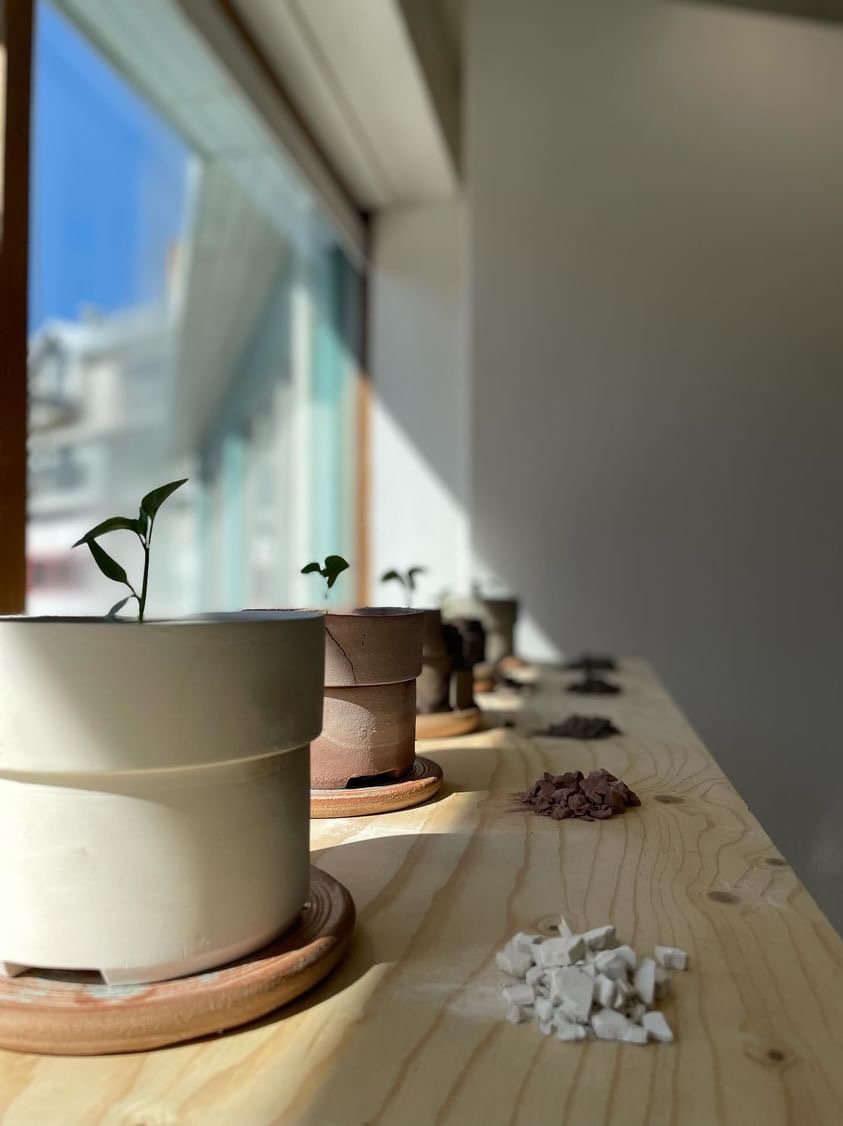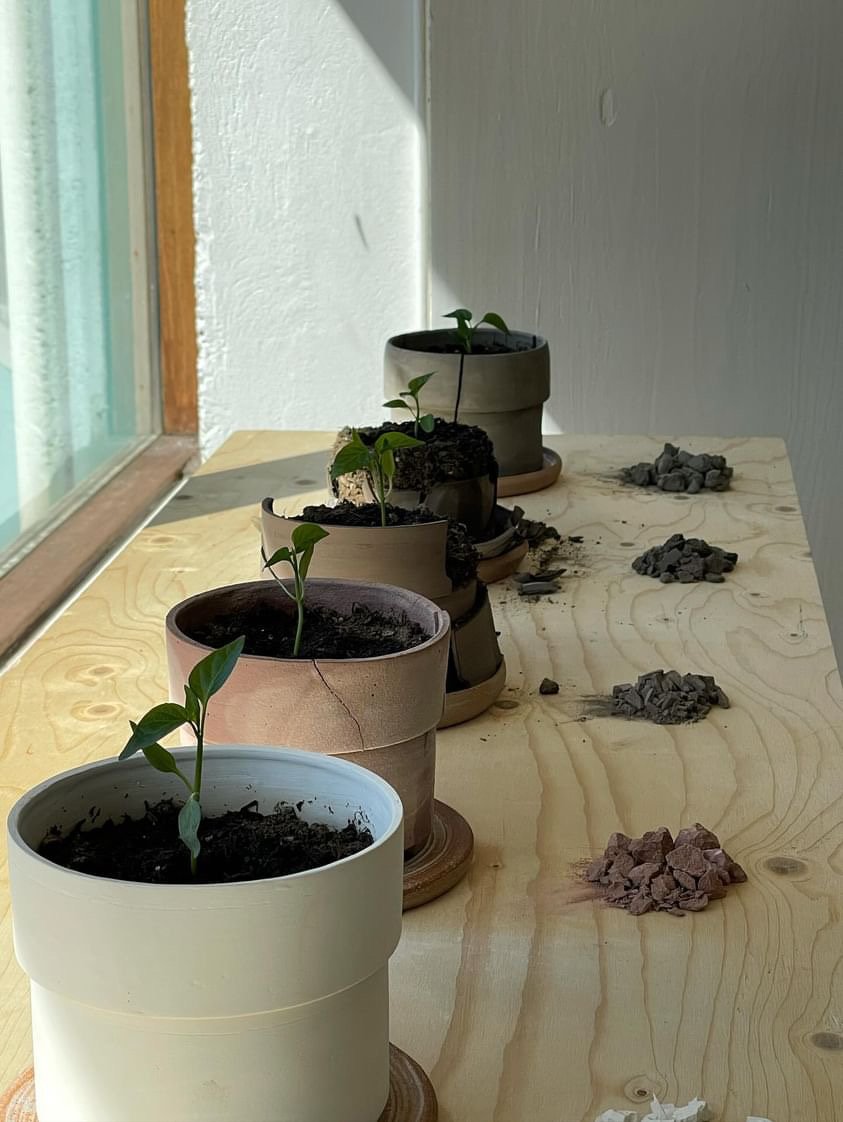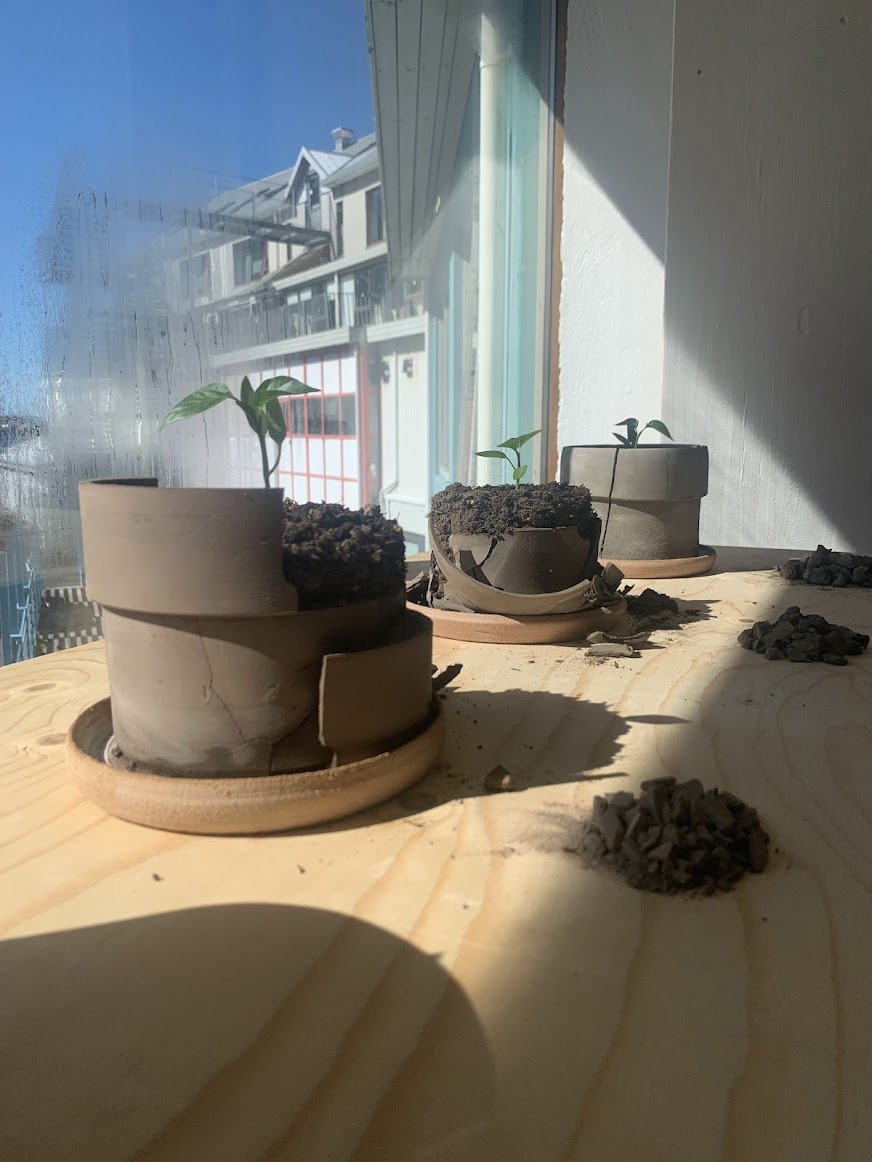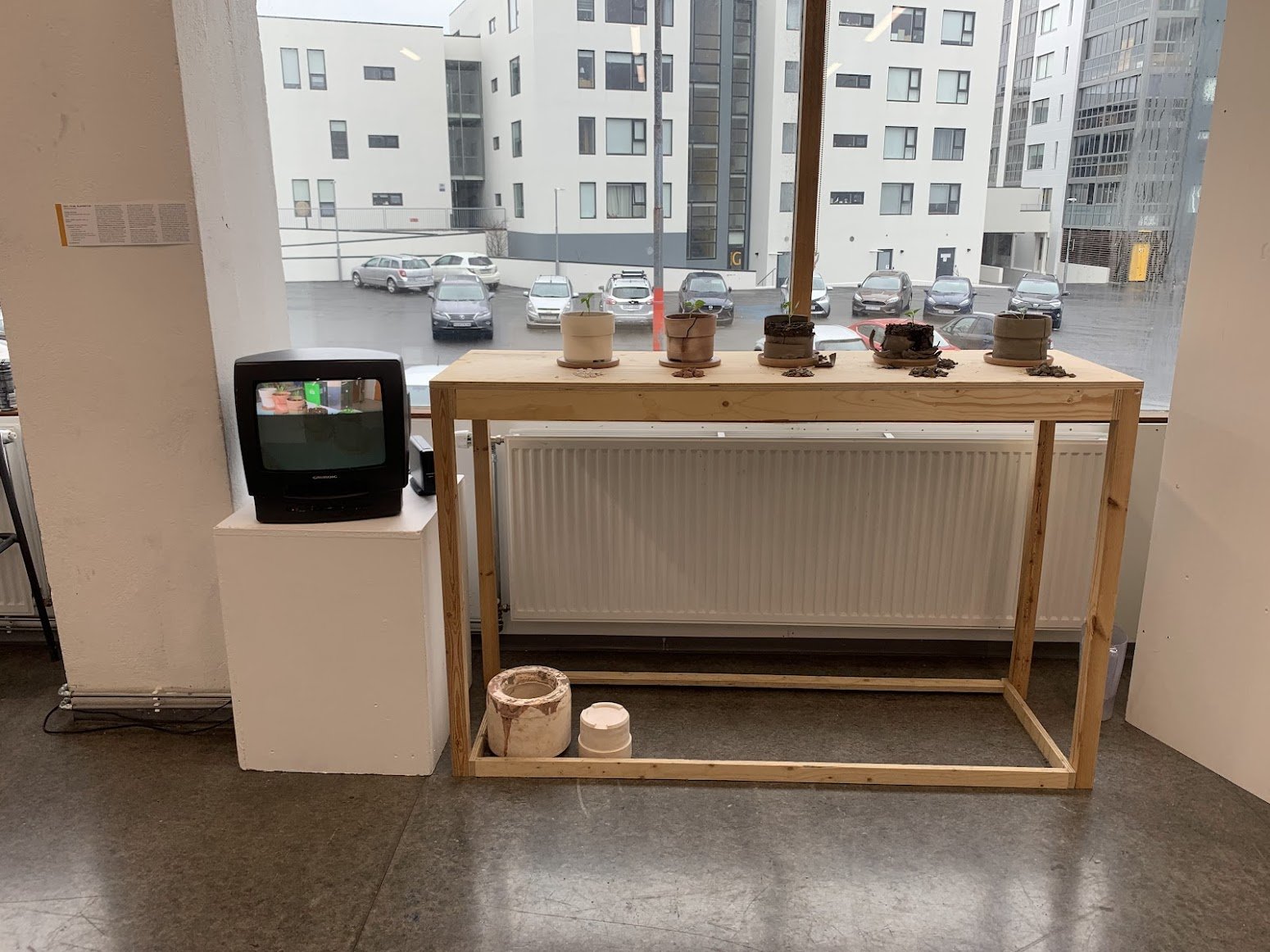Fragments
From dust to dust
Firing clay at extremely high temperatures creates one of the longest lasting elements known to humans as evidenced by archaeological finds of clay pots, plates and mugs from thousands of years ago that are still intact. Ceramics have been an important part of human culture for centuries but after firing clay at the temperature it takes to completely solidify it, it is impossible to recycle the clay due to the change in its chemical structure.
Fragments explores the possibilities of unfired clay, inspired by the Indian tradition of kuhlad; mugs made of clay that have been heated just enough to harden but leaving the clay unchanged so that it can essentially be broken down back into its original form and then used again and again. The project compares different types of clay in the forms of flower pots, from porcelain to regional Icelandic clay, to see how quickly the clay breaks down. Icelandic clay is rather young and underutilized but could it serve a purpose as a temporary addition to flower planting at home?
Planting requires frequent repotting as each plant grows and expands, creating a need for new and bigger pots regularly. Using unfired clay that breaks down naturally over time could possibly replace the need for constantly buying new pots since the clay could simply be collected and repurposed as often as needed while the plant is growing. The experiment leaves room for further possibilities with the clay such as heating it like kuhlads to last a bit longer, or mixing other elements into the clay to see how that would affect the breakdown process. Fragments is a step away from overconsumerism in the modern world and towards a new way of working with nature in its purest form.
Clay bodies from left to right:
No. 1: Porcelain mass
No. 2: Pottery Passion no. 592
No. 3: 20% Pottery Passion no. 592 / 40% Búðardalsleir / 40% Fagradalsleir
No. 4: Búðardalsleir (Icelandic clay)
No. 5: Fagradal clay (Icelandic clay)




